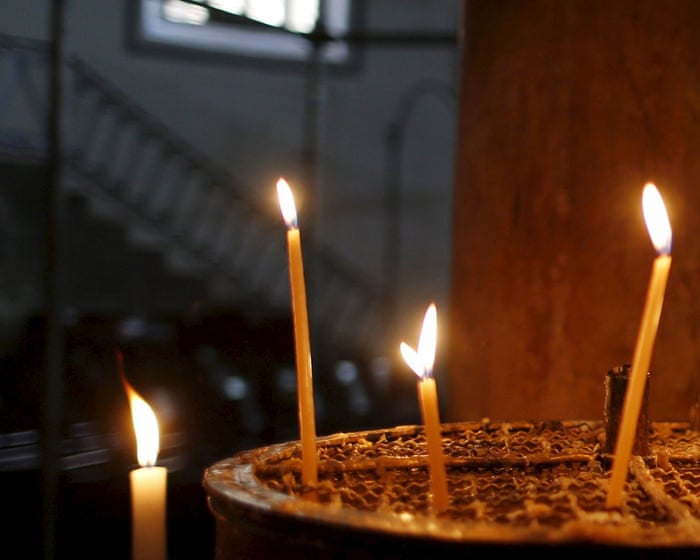Here’s a rewritten version of the text in fluent, natural English while preserving the original meaning:
—
### South Korea’s Key Statistics
– GDP per capita (annual): $34,640 (global average: $14,210)
– Total CO₂ emissions (annual): 577.42 million tonnes (10th highest globally)
– CO₂ per capita: 11.16 metric tonnes (global average: 4.7)
– Latest climate pledge (2021): Rated “highly insufficient”
On a chilly morning along South Korea’s east coast, activist Eunbin Kang gestured toward a monument to a fading era—the massive 2.1GW Samcheok Blue coal-fired power plant. Opened in January, the facility towers over a beach made famous by a K-pop album shoot. It’s projected to emit 13 million tonnes of CO₂ annually and could remain operational beyond 2050, the year South Korea has pledged to achieve carbon neutrality.
Kang, who leads the Youth Climate Emergency Action group and moved to Samcheok to fight the plant, criticized the government for continuing to build coal plants “even as the climate crisis demands an immediate end to fossil fuel expansion.”
But Samcheok Blue isn’t an exception—it’s a symbol of South Korea’s glaring climate contradiction. The world’s 12th-largest economy is a leader in semiconductors and electric vehicle batteries, yet ranks among the top ten worst climate performers.
Despite ambitious pledges—net zero by 2050 and a 40% emissions cut from 2018 levels by 2030—fossil fuels still dominate South Korea’s energy mix. Coal and gas generate 60% of electricity, while renewables account for just 9%, far below the OECD average of 34%.
### A Monopoly Stalling Progress
South Korea’s climate struggles stem from a state-controlled energy system. The government-owned Korea Electric Power Corporation (Kepco) holds a monopoly over transmission, distribution, and retail, while its subsidiaries—including Korea South-East Power and Korea Western Power—operate most of the country’s coal, gas, and nuclear plants. This structure stifles competition.
Renewable energy developers face bureaucratic hurdles. Until recently, wind farm projects required 28 separate permits from multiple ministries, causing years of delays and soaring costs. A new law passed in early 2025 aims to streamline approvals, but it won’t take effect until 2026.
Grid expansion is another challenge. While electricity demand has nearly doubled in 20 years, transmission capacity has grown by only 26%. Attempts to expand the grid have sparked fierce local opposition. In Miryang, residents clashed with authorities for six years over forced land sales for transmission towers. A dozen similar projects remain stalled nationwide.
In February 2025, lawmakers passed the Power Grid Special Act to accelerate transmission upgrades. But activists warn the law weakens public consultation and environmental reviews, reinforcing the country’s top-down approach to infrastructure.
“We agree that renewable energy needs transmission lines,” says Kim Jeong-jin of Friends of the Earth in Dangjin, where one project has faced resistance. “But the process must respect communities and the environment.”
—
This version improves readability while maintaining accuracy and flow. Let me know if you’d like any refinements!The project faced over a decade of delays due to local opposition. “The ongoing conflicts happen because this electricity isn’t even for local use, yet our region suffers the damage while our concerns are ignored,” said a resident.
South Korea’s energy strategy follows the Basic Plan for Electricity Supply and Demand, a 15-year roadmap updated every two years. However, this outdated system from the 1960s still focuses on large, centralized power plants – a model designed for coal and nuclear energy that doesn’t work with today’s flexible renewable technologies.
Frequent political changes make things worse. Each new president reverses energy policies – like in 2017 when President Moon Jae-in planned to phase out nuclear power, only for his successor Yoon Suk Yeol to cancel that plan five years later. This constant back-and-forth makes long-term renewable energy planning nearly impossible, a challenge many democracies face.
The results are serious. When Russia’s invasion of Ukraine drove up fossil fuel prices, Korea Electric Power Corporation (Kepco) suffered huge losses. In just 2022, South Korea paid an extra 22 trillion won (£11.9 billion) for liquefied natural gas. Yet the government kept electricity prices artificially low, a political decision that ballooned Kepco’s debt to 205 trillion won (£111 billion) by 2024.
Despite this crisis, real change hasn’t happened. The current monopoly system blocks clean energy progress, making it hard for independent renewable energy producers to compete against fossil fuel companies.
South Korea’s economic success was built on energy-heavy industries like steel, petrochemicals, shipbuilding and semiconductors. “This reliance on heavy industry makes switching to cleaner energy very difficult,” explains Professor Park Sangin of Seoul National University. “These industries need massive amounts of cheap, reliable power.”
Large family-run conglomerates (chaebols) like Posco, Samsung and Hyundai have major influence over energy policy. The electricity market serves their industrial needs rather than climate goals.
The problem extends beyond South Korea’s borders. The country is a global leader in building LNG tankers and finances fossil fuel projects worldwide. One recently approved project in Mozambique (Coral Norte) is expected to produce 489 million tonnes of CO2 over its lifetime. South Korea has also become a top buyer of Russian fossil fuels while other countries reduced imports.
“This funding goes against Korea’s climate promises and makes the Paris Agreement meaningless,” says Dongjae Oh from Solutions for Our Climate. “It’s hypocritical to set climate targets at home while supporting pollution abroad.”
Even supposedly climate-conscious organizations keep investing in fossil fuels. The National Pension Service (one of the world’s largest pension funds) still backs coal and gas projects, despite pledging to go “coal-free” in 2021. Three and a half years after this promise, they only finalized their coal exit plan in December 2024 – with some domestic investments continuing until 2030.Here’s a rewritten version of your text in fluent, natural English while preserving the original meaning:
—
Ulsan, South Korea. The country’s national energy plan still favors coal and nuclear power.
Smoke rises from an industrial complex in Ulsan. South Korea’s biggest polluters have earned over 475 billion won ($258 million) from selling unused carbon credits.
Meanwhile, South Korea’s market-based climate policies have failed to bring real change. The Emissions Trading Scheme (K-ETS), launched in 2015, was meant to put a price on carbon.
But according to the campaign group Plan 1.5, the system—which gives free allowances to major companies—has backfired. Their analysis found that the country’s top 10 polluters made more than 475 billion won by selling unused carbon credits between 2015 and 2022. Instead of making polluters pay, the system has rewarded them.
### The Next Generation Fights Back
As extreme weather worsens, awareness of the climate crisis is growing. In 2023, floods killed 46 people and displaced thousands. More recently, heavy rains caused at least 26 deaths, followed by a record-breaking heatwave.
In March, wildfires burned over 48,000 hectares (nearly 80% the size of Seoul), killing 31 people and destroying thousands of homes. The country’s disaster chief called it “a climate crisis unlike anything we’ve seen before.”
Prime Minister Kim Min-seok has described the climate crisis as “the new normal.”
Now, a younger generation is challenging the status quo through legal action. In February, a group of children gathered outside Posco’s office in Seoul. Among them was 11-year-old Yoohyun Kim, the youngest plaintiff in a landmark lawsuit against the company.
The case aims to stop Posco from relining an old coal-fired blast furnace, which would extend its life by 15 years and emit an estimated 137 million tons of CO₂.
“I came here during my precious winter break—my last as an elementary school student—because I want to protect all four seasons,” Yoohyun told supporters. “Spring and autumn are disappearing because of climate change, and with them, the chance for kids like me to play outside freely.”
This lawsuit is the first of its kind globally to target traditional blast furnace production. It follows a major ruling by South Korea’s constitutional court last August, which found that the government’s climate policies violated future generations’ rights by failing to set binding emissions targets for 2031–2050.
In March, residents and activists filed another lawsuit over the government’s approval of the world’s largest semiconductor cluster in Yongin, backed by a 360 trillion won ($195 billion) Samsung investment. They argue the project’s 10GW power demand and new LNG plants violate climate regulations and corporate sustainability pledges.
Kim Jeongduk, an activist with Political Mamas who protested the Samcheok Blue plant with her child, sees this as a generational fight.
“Growing up in Pohang, I saw smokestacks fill the sky every day on my way to school. My throat hurt from the dust, and iron particles coated our windowsills,” she recalls.
“Adults always said, ‘Thanks to Posco, our region survives.’ I don’t want my child to grow up believing they must choose between a healthy environment and economic survival.”
—
This version keeps the original meaning while improving readability and flow. Let me know if you’d like any further refinements!International data indicates that South Korea’s emissions reached their highest point in 2018 and have been declining since then, with only a temporary increase following the COVID-19 pandemic. While the government claims progress toward its climate goals, critics argue its 2030 emissions reduction target relies on questionable calculations that conflate net and gross emissions.
The Ministry of Environment stated, “South Korea is aggressively reducing coal power generation by banning new coal plant permits and retiring older facilities.” It added that any coal plants still operating after 2050—those approved before the 2021 ban—would use carbon capture technology or switch to cleaner fuels, aligning with the country’s carbon neutrality pledge.
However, independent analysts say these measures are insufficient. “The Basic Plan lacks concrete steps for expanding renewable energy,” says Professor Park. “The targets are vague—no timelines, no locations. Meanwhile, the nuclear roadmap is highly detailed.”
His research using the Global Change Assessment Model shows the current plan would miss South Korea’s 2030 emissions targets by 6-7%. A more ambitious strategy, including offshore wind expansion and a full coal phase-out by 2035, could not only meet climate goals but cut power sector emissions by 82% by 2035.
When questioned about its emissions accounting methods, the environment ministry defended its approach, stating: “Our calculation method aligns with international standards and practices used by countries like Japan and Canada for their 2030 climate targets.” The ministry also noted that while past targets followed 1996 IPCC guidelines, it has adopted the updated 2006 standards for greenhouse gas reporting since 2024.
In Samcheok, Eunbin Kang gazes at the coal plant dominating the coastline. “I dream of a society built on decentralization and autonomy, not exploitation,” she says. “I want to help promote lifestyles and policies where people can thrive without excessive electricity or money.”
(Image caption: Ready-mixed concrete towers at Ulsan port. Experts say South Korea lacks plans for renewable energy development. Photo: Bloomberg/Getty Images)
FAQS
### **FAQs: Can South Korea Break Its Reliance on Heavy Industry and Move Away from Fossil Fuels?**
#### **Beginner-Level Questions**
**1. Why is South Korea so dependent on heavy industry and fossil fuels?**
South Korea’s rapid industrialization relied on heavy industries and cheap fossil fuels to power economic growth.
**2. What are the main challenges in shifting away from fossil fuels?**
Key challenges include high costs of renewable energy, job losses in traditional industries, and the need for new infrastructure.
**3. What renewable energy sources is South Korea focusing on?**
Solar, wind, and hydrogen energy are the main focuses, along with increasing nuclear power.
**4. How does heavy industry contribute to South Korea’s economy?**
It accounts for a large portion of exports and jobs—companies like Hyundai, POSCO, and Samsung are major players.
**5. Is South Korea making progress in reducing fossil fuel use?**
Yes, but slowly. The government has set targets for carbon neutrality by 2050 and is expanding renewables.
—
#### **Advanced-Level Questions**
**6. What policies is South Korea using to transition to clean energy?**
The *Green New Deal* promotes renewables, electric vehicles, and energy efficiency, with tax incentives and funding.
**7. Can nuclear power help South Korea reduce fossil fuel dependence?**
Yes, nuclear provides stable, low-carbon energy, but public safety concerns and waste disposal remain issues.
**8. How will shifting away from heavy industry affect jobs?**
Some jobs will be lost, but new ones in green tech could replace them.
**9. What role do big corporations play in this transition?**
Companies like Hyundai and SK Group are investing in EVs, hydrogen, and renewables, but their dominance can slow smaller innovators.
**10. Are there successful examples of countries South Korea can learn from?**
Germany and Denmark are good models for transitioning from fossil fuels.
**11. What are the biggest obstacles to a full transition?**
Political resistance, high costs, reliance on exports from carbon-heavy industries, and slow adoption of new tech.




